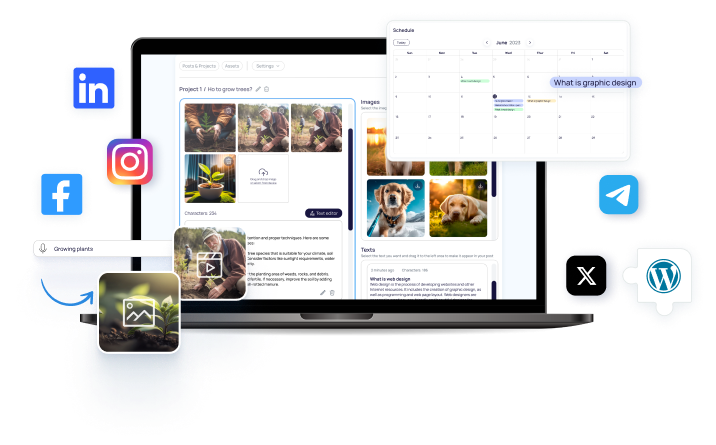Maximizing AI ROI in Sales: From AI-Washing to Real Revenue Growth for CROs

Brief news summary
Before 2019, C-suite concerns focused on getting sales teams to properly update CRM systems. Today, leaders face more complex challenges: proving the ROI of AI sales platforms, driving their adoption, and maintaining CRM discipline within intricate technology ecosystems. While AI promises streamlined sales pipelines, many organizations encounter “AI-washing,” where promotional hype exceeds actual revenue impact. Revenue leaders should view AI as purpose-built tools—assistants that prepare and summarize data, agents that optimize workflows, and AI SDRs that automate prospecting while preserving human judgment. The real value lies in effectiveness: executing the right tasks in the right sequence rather than mere efficiency. Measuring AI’s impact requires tracking quality, adoption rates, efficiency gains, and business outcomes. Challenges include automating tasks ill-suited to AI, insufficiently trained sales reps, and features that don’t align with needs. Data indicates AI SDRs and assistants best serve SMBs, whereas AI agents benefit complex enterprises. Chief Revenue Officers must align AI tools with strategic goals, automate critical revenue tasks, boost adoption, and consolidate sales platforms. To avoid AI-washing, organizations need a disciplined shift from hype toward measurable ROI. With a focus on effectiveness and integration, AI can transform sales into a growth engine by speeding decisions and generating predictable revenue. Are you ready to move beyond AI hype and achieve tangible results?Around 2019, before AI’s surge, C-suite leaders primarily worried about ensuring sales executives accurately updated the CRM. Today, their concerns have broadened with expanding technology stacks. Leaders now ask: “What’s the ROI of our AI sales platforms?Is our team fully leveraging this technology?And how do we still get them to update the CRM correctly?” ROI dominates software discussions, with AI embedded in roadmaps, revenue meetings, and social media. Despite promises of frictionless sales cycles, many pipelines remain imperfect, exposing a gap between AI hype and actual revenue outcomes—known as AI-washing—where claimed AI-driven transformation clashes with unchanged workflows and data. This message is aimed at CROs and revenue leaders seeking a realistic AI roadmap rather than hype, by comparing AI sales assistants, agents, and the aspirational AI SDR to show where real effectiveness beats mere efficiency, and how to validate ROI without complex attribution. ### Reality in Revenue Teams Today Insights from three SaaS revenue leaders reveal AI tools are widespread except in the critical buying journey. Many co-pilots and dashboards exist, yet pipeline velocity rarely improves because efficiency without prioritization is superficial. Revenue leaders need fewer steps to decisions, not more AI tasks. #### 1. Start With the Verb, Not the Vendor B2B reps and buyers face overload from buzzwords. The fastest way to clarify value is to convert every AI claim into a “job to be done. ” Without a clear job, value remains vague. - **Assistants** support prep by surfacing context, summarizing accounts, drafting emails, accelerating readiness. - **Agents** orchestrate multi-step workflows—qualifying leads, enriching data, scheduling, CRM updates, nudging next steps—but when well-designed, they are orchestration tools, not just toys. - **AI SDRs** automate prospecting and trigger communications but still rely on humans for discovery and negotiation; they add capacity rather than replace headcount. Jonathan Pogact of Seamless. ai advises mapping AI tools to customer journey stages instead of forcing them into org charts—ensuring assistants and agents sharpen sellers and tie to measurable steps. #### 2. Efficiency Is a Coupon; Effectiveness Is the Catalyst The industry promises “giving time back, ” but real value means “return on time:” doing the right activities, the right way, in the correct order. Efficiency saves minutes; effectiveness removes bottlenecks. AI should target chokepoints, such as filtering unqualified leads or clearing stalled proposals. Eric Gilpin, CRO of G2, emphasizes: “I don’t want to be ‘efficient. ’ I want to be effective; doing the right things, the right way, in the right order. ” Best practices include automating customer-near “last mile” workflows (e. g. , booking meetings, demos, signing orders) for visible ROI, consolidating fractured tech stacks to ease adoption, and embedding AI seamlessly so reps don’t need to learn new portals—maximizing usage. #### 3. Measure the Work, Not the Wow Hype sounds like “AI-powered. ” Revenue comes from measurable lifts in key metrics such as meetings booked. Effective measurement requires a four-part scorecard: - **Quality (offline):** Human-verified accuracy, relevance, tone, clarity pre-rollout. - **Adoption (behavioral):** Weekly active users and retention; under 10–20% adoption means little impact. - **Efficiency (operational):** Time per task and cycle times—important but secondary metrics. - **Business Impact (commercial):** Improved response rates, meetings booked, conversion stages, opportunities created and closed. Tyler Phillips from Apollo. io notes impact is easiest to prove closest to customer outcomes—AI-driven outreach generating immediate replies shows clear causality. ### Common Pitfalls in AI for Sales - **Automating irrelevant tasks:** Avoid automating low-value or non-revenue-tied seller tasks. - **Under-prepared reps:** Buyers shortlist vendors ahead of calls; generic outreach ignoring customer signals wastes chances. Use assistants to synthesize buyer context and optimize discovery. - **Feature-fit mismatch:** Most users access only ~20% of AI features.
Good products provide guardrails, suggestions, and guidance to avoid frustration. Jonathan Pogact sums it up: “Busy work gets faster, but revenue doesn’t grow unless you point AI at the right things in the right order. ” ### AI SDRs, Assistants, and Agents: What the Data Shows Analysis of ~2000 G2 reviews finds: - AI SDRs and assistants perform best in SMB and mid-market for their speed and simplicity. - AI agents handle orchestration and complex enterprise workflows, indicating maturation towards “agentic AI. ” - Adoption depends on company size and role: SMBs want fast lead access; enterprises need integrated compliance and controls. - ROI timelines vary, but user adoption remains a key success indicator. ### From AI-Washing to Revenue Reality: Guidance for CROs AI is now the operating system for revenue teams. To harness its power, CROs should: - **Audit the “AI in order to ___” gap:** Map each AI tool to a clear sales outcome. - **Automate the last mile:** Prioritize workflows closest to revenue impact, such as speed-to-lead or SDR-to-AE handoffs. - **Push for adoption parity:** Weekly rep usage is essential to avoid shelfware. - **Align roles with ROI:** Use assistants for SMB rep workflows; agents for enterprise operations. - **Plan for vendor rationalization and consolidation:** Expect fewer vendors and clearer ROI benchmarks. ### A 30-Day Blueprint for CROs - **Week 1:** Audit all AI tools to identify clear “in order to ___” outcomes; retire tools without measurable impact. - **Week 2:** Automate one last-mile workflow with defined agent roles and human checkpoints; pilot with a team subset. - **Week 3:** Implement a four-metric scorecard measuring quality, adoption, efficiency, and business impact. - **Week 4:** Consolidate platforms to two core systems; establish governance covering ownership, escalation, branding, and privacy. ### Is Your Sales Team Guilty of AI-Washing? Frequently, yes. Many teams implement AI tools for efficiency but fail to connect them to measurable customer journey steps, resulting in AI-washing—efficiency theater without revenue lift. CROs who focus on automating last-mile workflows, tracking real outcomes, and holding vendors accountable can turn AI into a performance driver. The ongoing challenge is shifting from AI hype to ROI-proven workflows that accelerate buyer intent-to-decision cycles. Ultimately, streamlined buyer journeys will outperform loud AI marketing claims. ### FAQs 1. **What is AI-washing?** Claiming AI adoption without measurable buyer journey outcomes, creating appearances without impact. 2. **Differences between AI SDRs, assistants, and agents?** Assistants support prep and summarization; agents orchestrate workflows like routing and scheduling; AI SDRs automate prospecting but don’t replace nuanced human sales. 3. **How to measure ROI?** Use quality, adoption, efficiency, and business impact metrics aligned to revenue outcomes. 4. **Where is AI adoption strongest?** North America leads; APAC and Europe show growing interest; emerging markets like India, Australia, and France remain underpenetrated. 5. **How to avoid AI-washing?** Audit AI use cases with an “in order to ___” mindset, automate last-mile steps first, align tools with role needs, and emphasize adoption. --- In summary, AI’s role in sales has evolved from buzzword to genuine growth lever. Success depends on prioritizing effectiveness over mere efficiency, close measurement, and disciplined adoption to transform sales teams and drive predictable revenue growth. Are you ready to streamline your path to your ideal customer’s “yes”?
Watch video about
Maximizing AI ROI in Sales: From AI-Washing to Real Revenue Growth for CROs
Try our premium solution and start getting clients — at no cost to you

I'm your Content Creator.
Let’s make a post or video and publish it on any social media — ready?
Hot news

SaaStr AI App of the Week: Kintsugi — The AI That…
Each week, we spotlight an AI-driven app that solves real issues for B2B and Cloud companies.

The Role of AI in Local SEO Strategies
Artificial intelligence (AI) is increasingly influencing local search engine optimization (SEO) strategies.

IND Technology Secures $33M to Prevent Grid Crise…
IND Technology, an Australian company specializing in infrastructure monitoring for utilities, has secured $33 million in growth funding to boost its AI-driven efforts to prevent wildfires and power outages.

AI rollouts get messy for publishers, brands
In recent weeks, an increasing number of publishers and brands have faced significant backlash as they experiment with artificial intelligence (AI) in their content production processes.

Google Labs and DeepMind Launch Pomelli: AI-Power…
Google Labs, in partnership with Google DeepMind, has introduced Pomelli, an AI-powered experiment designed to help small-to-medium-sized businesses develop on-brand marketing campaigns.

AI Video Recognition Enhances Content Moderation …
In today’s rapidly expanding digital landscape, social media companies are increasingly adopting advanced technologies to safeguard their online communities.

Why 2026 could be the year of anti-AI marketing
A version of this story appeared in CNN Business’ Nightcap newsletter.
AI Company
Launch your AI-powered team to automate Marketing, Sales & Growth

and get clients on autopilot — from social media and search engines. No ads needed
Begin getting your first leads today








